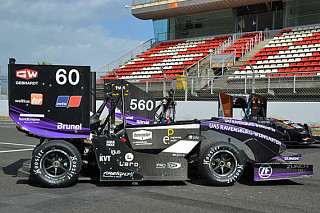Change Language :

Custom-made component with assistance from the igus 3D printing service
Fast delivery thanks to online configurator and laser sintering procedure

Designers not only save time, as the online configurator makes it easy to design a digital 3D model. The special part is manufactured using the so-called SLS process (selective laser sintering). A coater spreads a wafer-thin layer of plastic powder on a building platform. The printer then uses a laser to melt the powder wherever the component is to be created according to the 3D model. The platform then lowers by one layer thickness and the process begins again. After a few hours, the pinion is printed.Thanks to 3D printing, there is no need for the usual turning and milling with the corresponding drawing department," explains Richy Göser from the Formula Student Team Weingarten.
"Production with the 3D printer is probably also more economical for small quantities."
Robust components made of tribopolymers

Used as a chain tensioner in the motor's chain drive, the pinion must be very robust. Here, too, the iglidur tribo-polymers demonstrate their superiority to ordinary polymers. igus developed the high-performance plastics specifically for dynamic industrial applications. In this case, iglidur i6, which is more resistant to wear than common plastics for laser sintering printing, was used. The material's wear resistance was tested in the in-house test laboratory.The experts tested a worm wheel at 5Nm and 12rpm. The gear made of Polyamide 12, a classic material for laser sintering printing, failed after just 521 cycles due to its high coefficient of friction.iglidur i6, on the other hand, exhibited only minor wear after one million cycles and was fully functional. "Such tests show us that we can count on the material," says Göser. "The previously used ball bearings in the chain drive hardly lasted 20 kilometres, which is not great because our longest race is 22 kilometres. We expect much more robustness from the 3D printed igus pinions in the 2019 season."
Further application reports
Consulting
I look forward to answering your questions

Dirk Tietz+49 2203 9649 562Write e-mail
Shipping and consultation
In person:
Monday to Friday from 7 am - 8 pm.
Saturdays from 8 am- 12 pm.
Online:
24h
WhatsApp-Service:
Montag – Freitag: 8 – 16 Uhr




